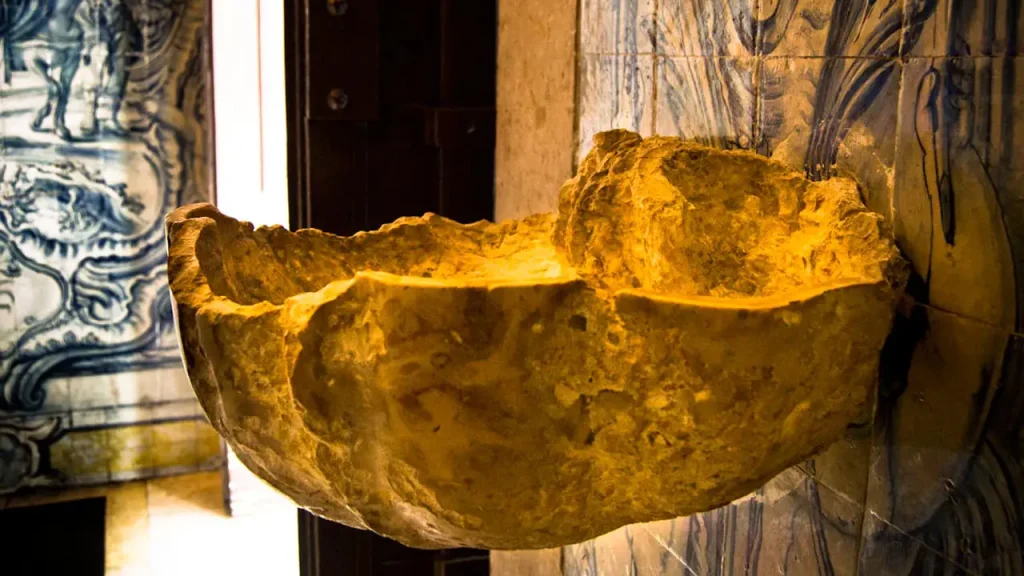Original article published on 18 April 2018
The Church of Nossa Senhora da Oliveira is, perhaps, one of the most unknown spaces of Christian cult, even though it is located right in Pombaline Downtown.
Inserted, interestingly enough, in a building like many others, its façade is so discreet that we might come across its door daily without ever noticing that there is a church. Only a simple triangular pediment, surmounted by a cross, enclosing a bronze olive branch, a stone plaque with the engraved name and a small bell tower indicate the existence of a place of worship.
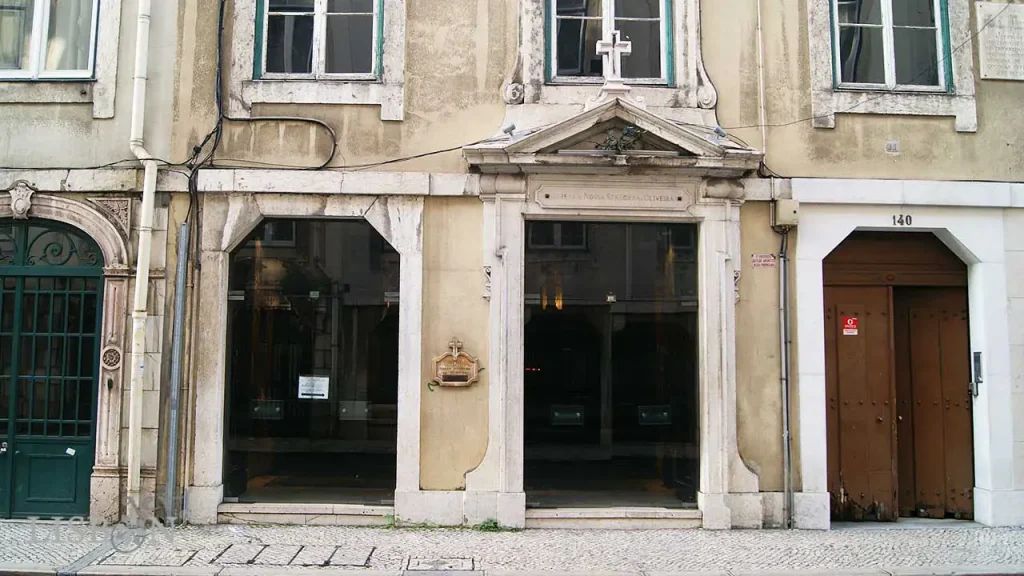
Get to know Lisbon’s historic neighbourhoods in a guided tour and discover unmissable places of this magnificent city.
The History of the Church of Nossa Senhora da Oliveira
The history of the foundation of the Church of Nossa Senhora da Oliveira is also curious. Despite its date not being unanimous (between the 13th and 14th centuries), it is certain that it was owing to Pedro Esteves, a rich merchant from Guimarães and his wife Clara Geraldes, whose graves were found.
The rich couple was responsible for the construction of the small church dedicated to Our Lady and to Saint Eloy, patron of jewellers and goldsmiths, next to the old Church of São Julião. It is believed that the proximity of an old olive tree is the origin of the name, Senhora da Oliveira or Oliveirinha (directly translated to ‘Lady of the Olive Tree’), but the existence of an old cult of Senhora da Oliveira in Guimarães seems more plausible to us.
Later on, the brotherhood of confectioners acquired the land and the small church, in ruins, and proceeded to rebuild it. However, it was completely destroyed during the earthquake of 1755.
It is usually said that after rough negotiations with the government of Marquês de Pombal, the brotherhood was pushed to a new nearby space, integrated in a residential building, and there restored its place of worship. But this isn’t exactly how it went…
After attentively observing the overlay maps of before and post-earthquake of 1755 of the riverfront part of the city that are available in Vieira da Silva’s (Lisbon specialist) work, it was possible to draw surprising conclusions.
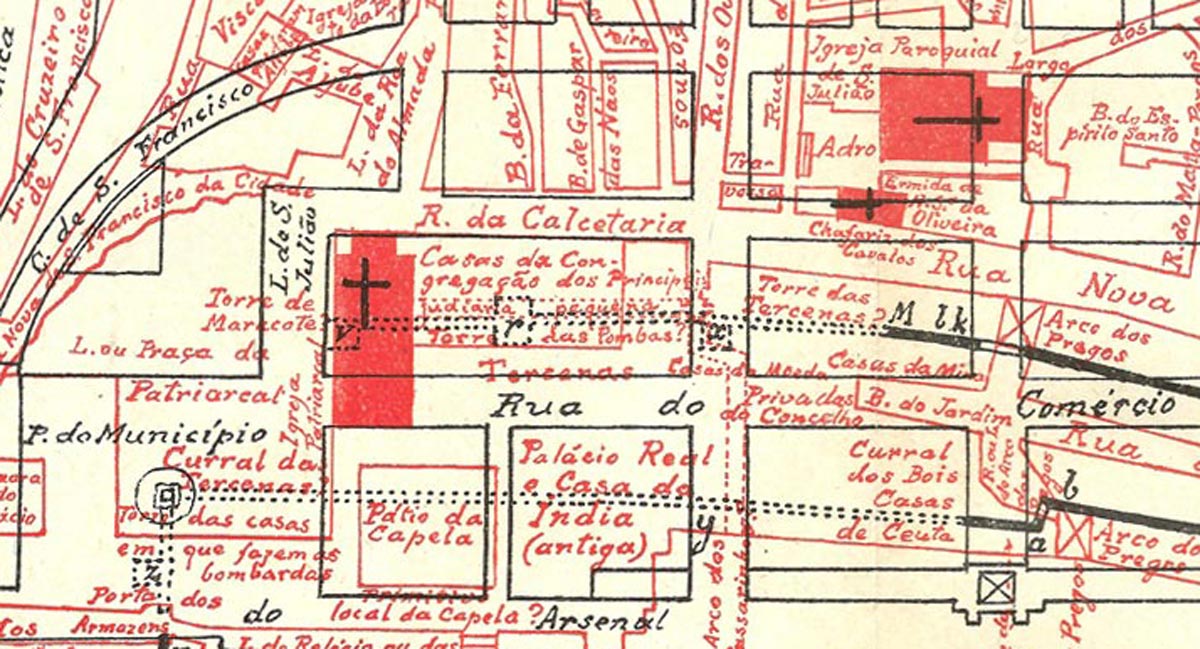
Today the Church of São Julião, that corresponds to the Museum of Money, is located in Município Square right next to the City Council of Lisbon. But it wasn’t always like this!
Before the earthquake this church was situated more to the eastside and to the north, corresponding its back today to Rua Augusta. Additionally, the old small Church of Oliveira, also destroyed by the earthquake, is present in the map and was situated in the churchyard of the Church of São Julião, exactly where it is located today.
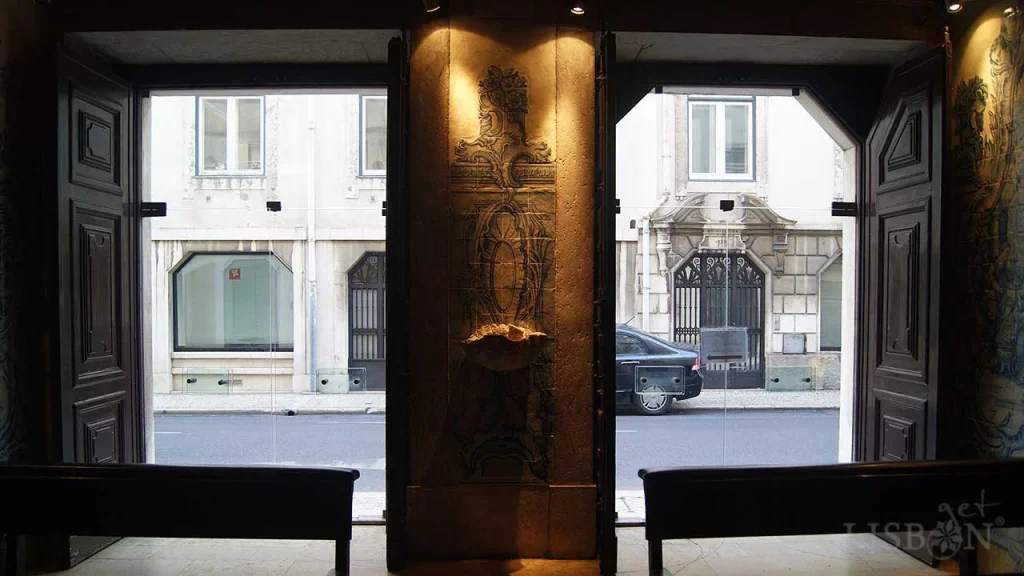
This fact reveals the importance and the influence that the brotherhood had to have to be able to rebuild its space of worship in the same place, now integrated in the new urban part of the rebuilt city.


The Hidden Treasure
This church, constituted by only a nave, modest in its dimensions, could be nothing but a small space of worship, if it wasn’t for the surprising array of tile panels from the Rato Royal Factory of Crockery. This factory, founded by Marquês de Pombal in 1767, had great relevance in the panorama of decorative arts, when it comes to new practices of the use of crockery and to the training of masters and painters.
The panels, dedicated to the Life of the Virgin, feature rich frames with shell and plant-inspired motifs, cherubs and angels that cover every wall of the nave and of the altar. Although they were executed in the end of the 18th century, during the reign of Queen Maria I, they are stylistically inspired by King João V’s blue and white Baroque (1706-1750).
In eight panels, episodes from the life of the Virgin are depicted. Along the nave, on the left side from the entrance to the altar: the Birth of the Virgin, the Presentation at the Temple, and the Marriage of the Virgin. On the right side, from the altar to the entrance: the Annunciation, the Nativity, and the Flight into Egypt. In the chancel, on the left, the Assumption, and on the right, the Death of the Virgin.
From the rest of the decorations, stands out the altar, where the patroness Senhora da Oliveira is enthroned and wearing a crown: a small statue, made of a wadding and polychromatic wood. Placed in lateral niches, are the images of Saint Anthony and Saint Eloy. From the extinct Church of São Julião came the statue of Rita of Cascia, a saint of great popular devotion that we can find on the left side, opposite to a Sacred Heart of Jesus.
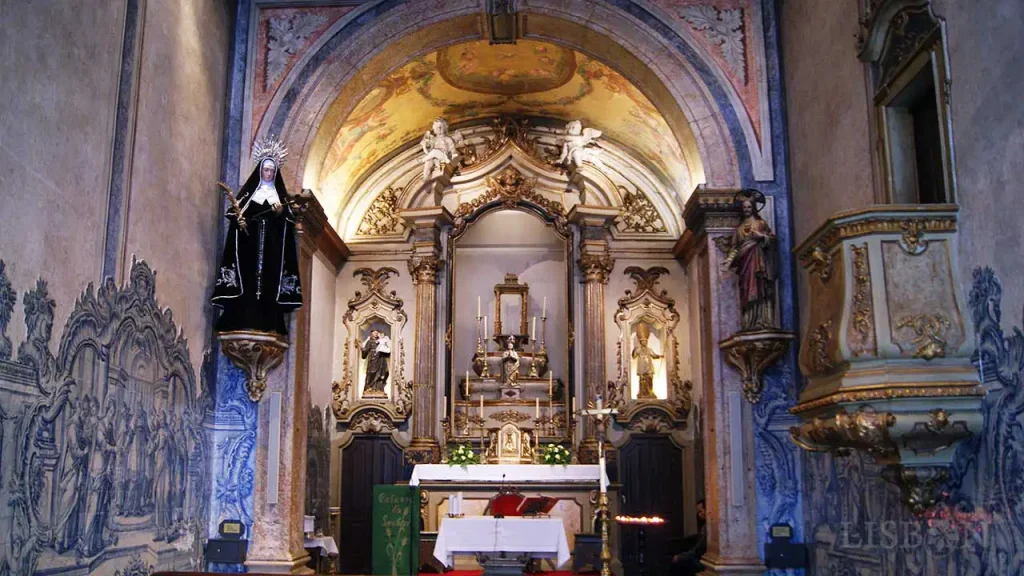
On the ceiling of the nave we can observe a painting representing the Virgin of Glory, by an unknown author. On the ceiling of the main chapel, we have the representation of the Holy Spirit surrounded by cherubs and wreaths of flowers. And, laterally, two medallions flanked by angels present, in grisaille, the Virgin and Christ, on the left and right, respectively.
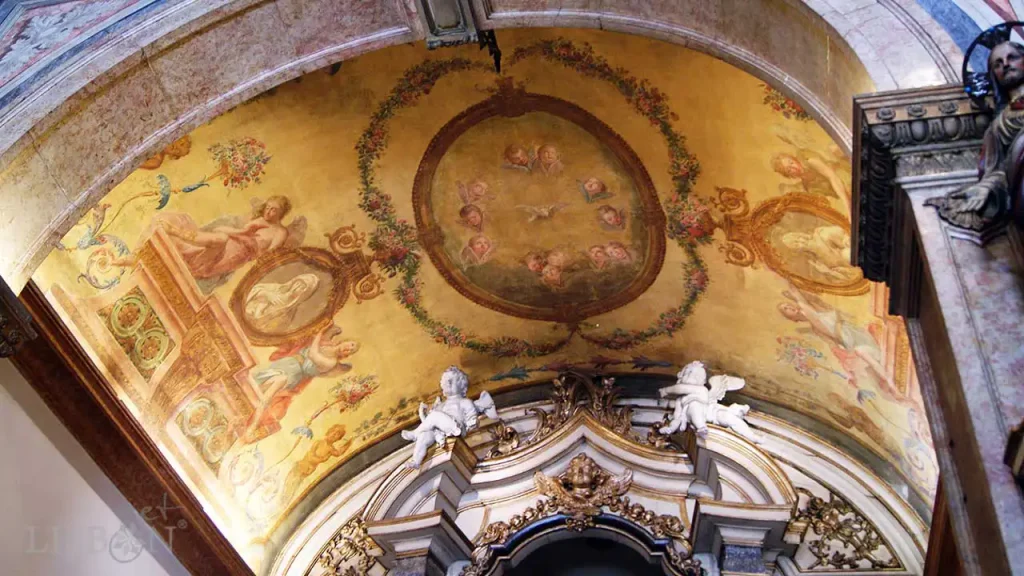
The Church of Nossa Senhora da Oliveira features a high choir and a pulpit in intricately carved and gilded wood, with faux marble effects in painted wood and stucco completing the overall decoration of this unique space.
Without a doubt, a special place of worship that will surprise you!
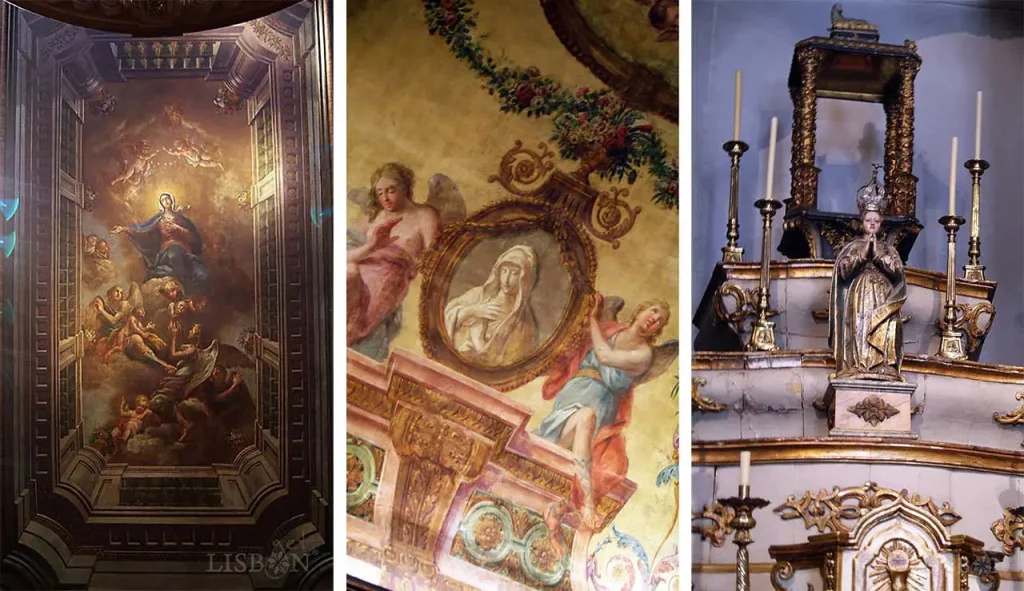
| Never miss another article | Subscribe here |
The project getLISBON has been very rewarding and we want to continue revealing the singularities of fascinating Lisbon.
Help us keep this project alive!
By using these links to make your reservations you’ll be supporting us. With no extra costs!
• Looking for a different experience? We can create a customised itinerary based on your interests. Contact us!
• Or if you prefer tours and other activities in various destinations, take a look at GetYourGuide.
• Save time and money with a flexible Lisbon Card!

